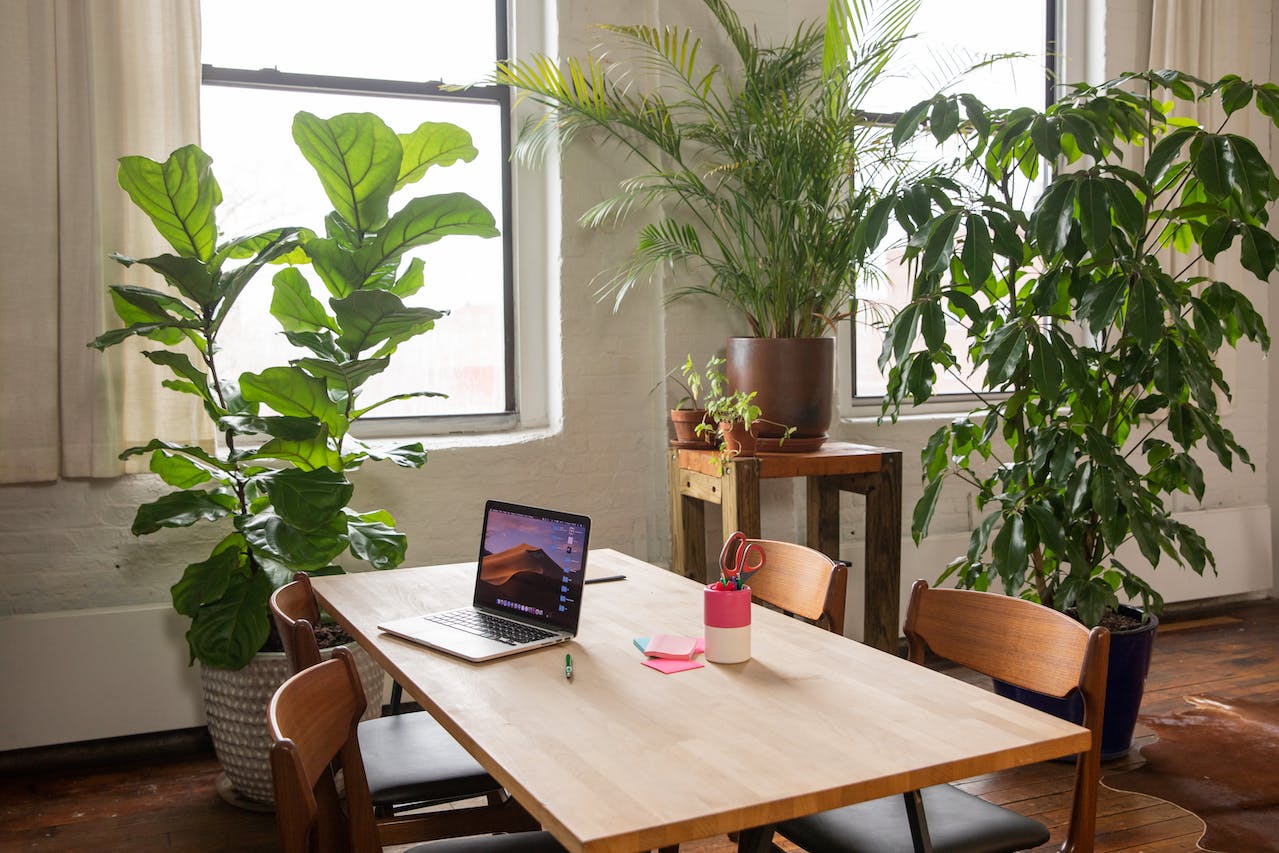In the realm of interior design, the allure of tall indoor plants is undeniable. Not only do they add a touch of sophistication to your living space, but they also offer numerous benefits, from improved air quality to a sense of tranquility.
In this guide, we’ll explore the different types of tall indoor plants, how to maintain them and share some valuable tips to help you make the most of these green companions.
Best Types of Tall Indoor Plants
When choosing the best types of tall indoor plants to put in your home, it’s essential to consider both aesthetics and practicality.
Each plant comes with its unique care requirements, so it’s crucial to match them with your space’s lighting conditions and your commitment to maintenance.
Whether you prioritize air-purifying qualities, striking visual appeal, or low-maintenance options, selecting the right tall indoor plant can elevate your space and contribute to a healthier indoor environment.
Below are some of the best tall indoor plants perfect for your home.
Fiddle Leaf Fig (Ficus lyrata)
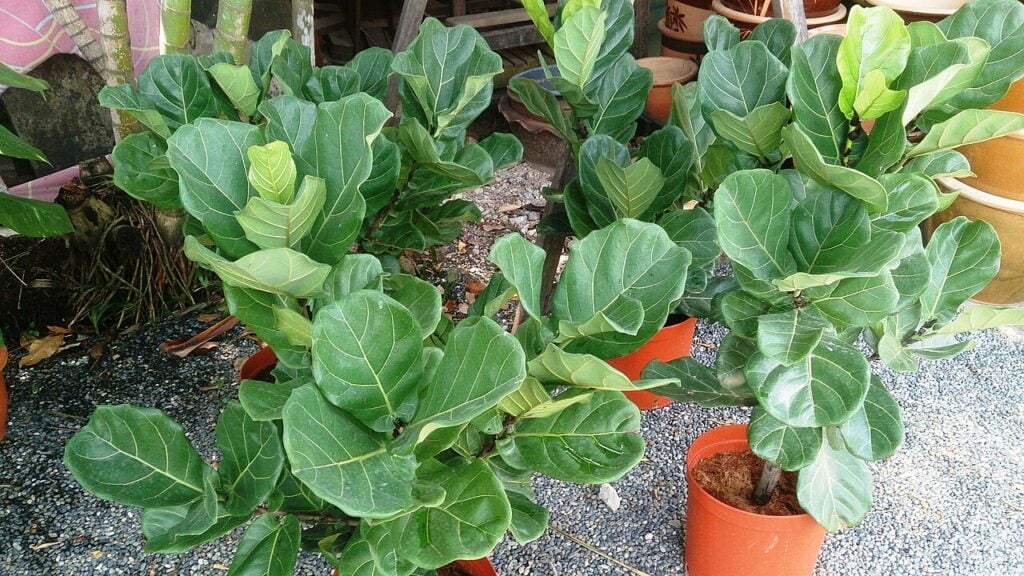
The Fiddle Leaf Fig, with its broad, violin-shaped leaves, is a captivating choice for those seeking a bold statement piece in their homes. Its lush, green foliage brings a touch of the tropics indoors.
To care for a Fiddle Leaf Fig, place it in bright, indirect light. Direct sunlight can scorch its leaves, while low light may lead to sparse growth.
Water when the top inch of soil feels dry, ensuring proper drainage to prevent root rot. Regularly dust the leaves to keep them clean and free from pests.
Pros:
- Striking visual appeal.
- Air-purifying qualities.
- Adaptable to different room conditions.
Cons:
- Prone to overwatering issues.
- Sensitive to changes in the environment.
- May require some patience for acclimation.
Snake Plant (Sansevieria trifasciata)
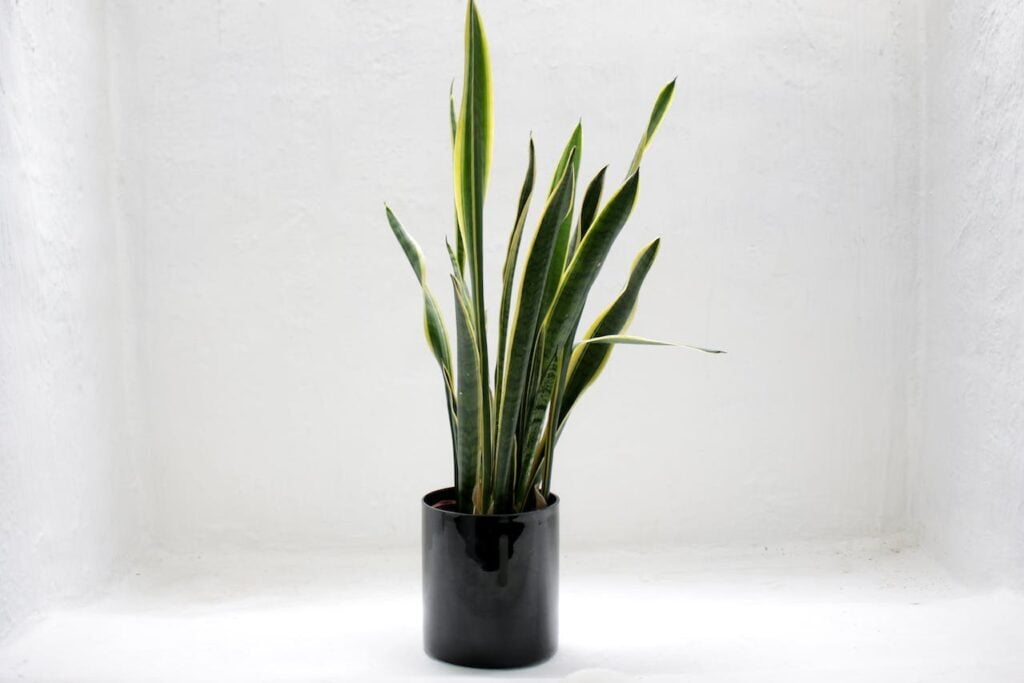
Known as the mother-in-law’s tongue, the Snake Plant is a resilient choice with upright, sword-like leaves. Its architectural form suits both modern and traditional interiors.
Thriving in low-light conditions, this plant is perfect for spaces with minimal natural sunlight.
Water sparingly, allowing the soil to dry out completely between waterings. Its hardy nature makes it an ideal choice for beginners or those with a busy lifestyle.
The Snake Plant is also known for its air-purifying abilities, removing toxins like formaldehyde and benzene from the air.
Pros:
- Tolerant of low light.
- Excellent air purifier.
- Low maintenance.
Cons:
- Prone to root rot if overwatered.
- Growth can be slow.
- Some people may be allergic to its sap.
Bird of Paradise (Strelitzia reginae)
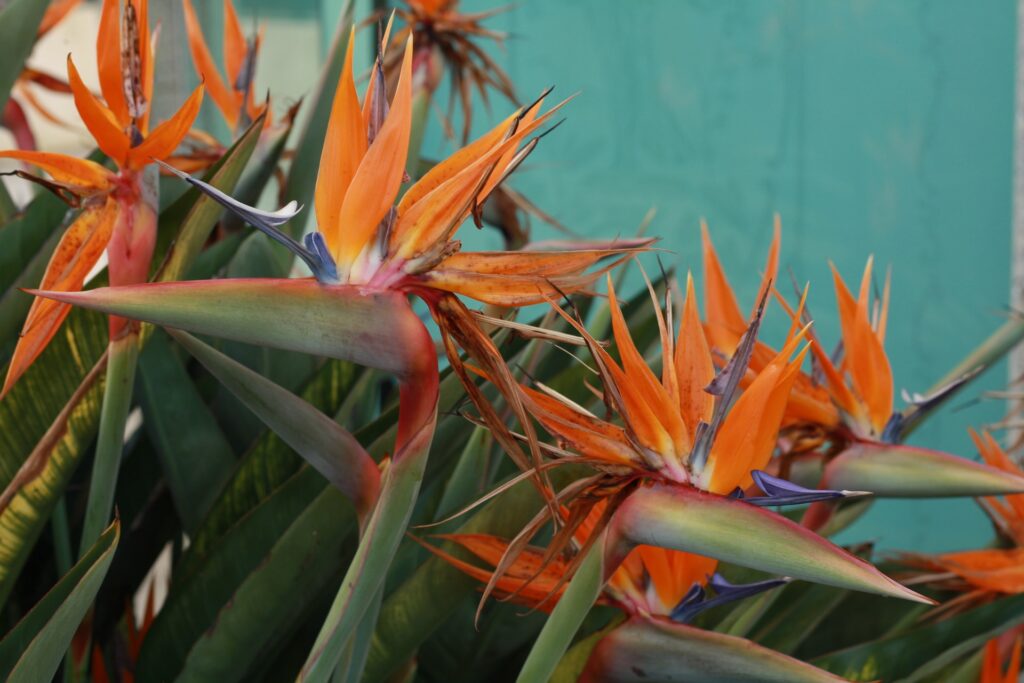
With its banana-like leaves, the Bird of Paradise adds a touch of the exotic to any interior space. This plant thrives in bright, indirect light, making it suitable for rooms with ample sunlight.
Ensure well-draining soil and water regularly, allowing the top inch of soil to dry between waterings. The Bird of Paradise can grow quite tall, making it a fantastic choice for those looking to make a bold design statement.
Regularly wipe the leaves with a damp cloth to keep them dust-free and enhance their glossy appearance.
Pros:
- Striking tropical appearance.
- Grows into an impressive size.
- Effective air purifier.
Cons:
- Requires space due to its size.
- Sensitive to drafts and temperature fluctuations.
- Slow-growing in low light conditions.
Rubber Plant (Ficus elastica)
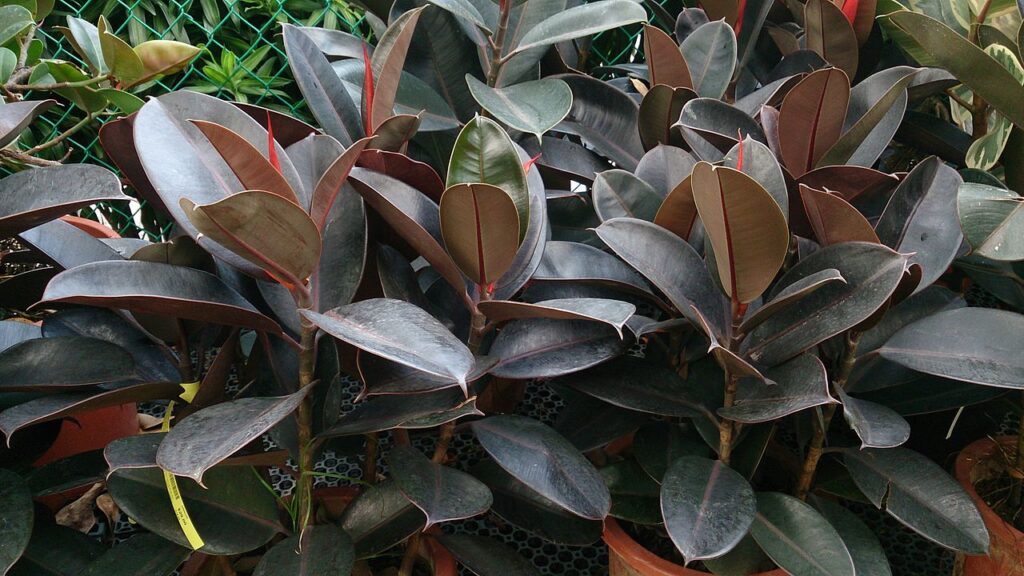
The Rubber Plant, with its glossy, dark green leaves, combines style with ease of care. It tolerates low light conditions but thrives in bright, indirect light.
Water when the top inch of soil is dry to the touch, and ensure the pot has drainage holes to prevent waterlogging. Regularly prune to maintain its shape and remove any yellowing leaves.
With its air-purifying qualities, the Rubber Plant is an excellent addition to any room, providing both aesthetics and functionality.
Pros:
- Attractive and glossy foliage.
- Adaptable to different light conditions.
- Effective air purifier.
Cons:
- Sensitive to overwatering.
- Leaves may collect dust.
- Can be toxic to pets if ingested.
Yucca (Yucca elephantipes)
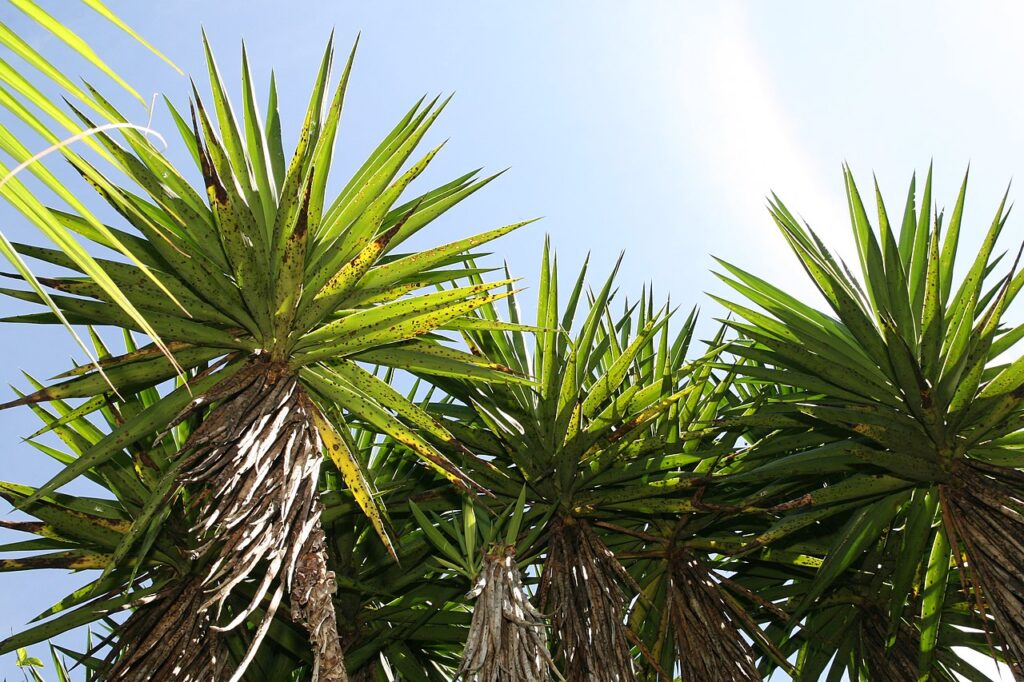
The Yucca, with its long, sword-shaped leaves, adds a touch of drama to interior spaces. Preferring bright light, this plant requires well-draining soil and infrequent watering.
Allow the soil to dry out between waterings to prevent root rot. Its architectural form and resilience make it an excellent choice for both homes and offices.
Regularly inspect the plant for pests, as Yuccas can be susceptible to spider mites and scale insects.
Pros:
- Dramatic and unique appearance.
- Tolerant of neglect.
- Thrives in bright conditions.
Cons:
- Susceptible to pests if not monitored.
- Requires space to accommodate its height.
- Slow growth rate.
Maintenance Tips for Tall Indoor Plants
Lighting
Placing tall indoor plants near windows with bright, indirect light is essential for their overall health. Many of these plants thrive in well-lit conditions, but it’s crucial to prevent direct sunlight exposure, which can scorch leaves.
Rotate the plants regularly to ensure all sides receive adequate light, promoting even growth.
Watering
Overwatering is a common mistake when caring for tall indoor plants. It’s essential to check the soil moisture before adding water.
Allow the top inch of soil to dry out between waterings. Adjust the watering frequency based on factors like the plant type, size, and environmental conditions.
Humidity
Several tall indoor plants, especially those with large leaves, benefit from increased humidity.
Misting the leaves regularly or placing a tray of water nearby can help maintain an optimal humidity level, preventing issues like leaf browning and dryness.
Pruning
Regular pruning is crucial for maintaining the aesthetic appeal of tall indoor plants. Trim yellow or brown leaves to encourage new growth and remove any dead or damaged parts.
Pruning also helps manage the size and shape of the plant, ensuring it fits well within your living space.
Support
As tall plants grow, they may need support to prevent leaning or toppling over. Use stakes or ties to provide additional support.
This is particularly important for plants with heavy foliage or top-heavy growth patterns.
Tips for Maximizing the Impact of Tall Indoor Plants
Strategic Placement
Positioning tall plants strategically in corners or beside furniture can create a sense of verticality in the room.
This not only enhances the visual appeal but also draws the eye upward, making the space feel more open and inviting.
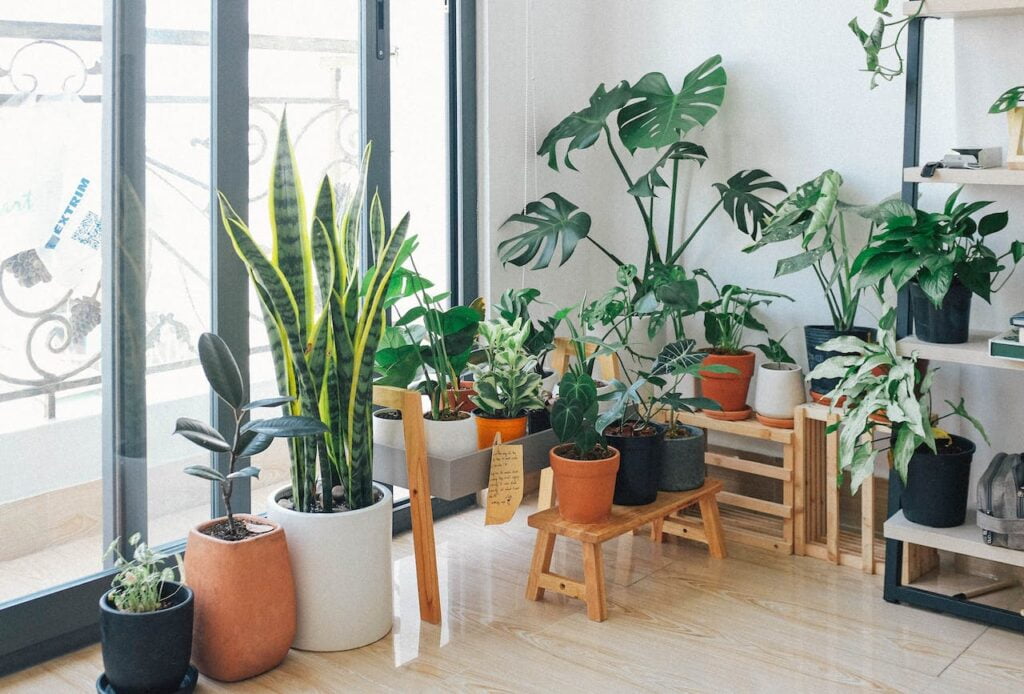
Grouping
Grouping tall plants together can create a lush, jungle-like atmosphere in your living space. Vary the heights and types of plants to add visual interest and create a dynamic, layered effect.
This approach works well in larger rooms or areas with high ceilings.
Decorative Containers
Choosing stylish containers that complement your interior decor is an essential aspect of maximizing the impact of tall indoor plants.
Opt for pots that enhance the overall aesthetic while providing adequate space for the plant’s root system. Ensure the containers have drainage holes to prevent overwatering.
Regular Maintenance Routine
Establishing a consistent care routine is crucial for keeping tall indoor plants healthy and vibrant.
This routine should include tasks such as dusting the leaves, checking for pests, and adjusting watering and lighting conditions as needed. Consistency is key to long-term plant success.
Seasonal Considerations
Be mindful of seasonal changes and their impact on your tall indoor plants. During the winter months, for example, indoor heating can lead to drier air, affecting humidity-sensitive plants.
Adjust your care routine accordingly, considering factors like temperature, light availability, and potential drafts.
Pros and Cons of Having Indoor Plants
Pros:
- Improved Air Quality: Indoor plants are natural air purifiers, removing toxins and pollutants from the air and contributing to a healthier indoor environment.
- Enhanced Aesthetics: Tall indoor plants serve as decorative focal points, adding visual interest and a touch of nature to your living space.
- Stress Reduction: The presence of indoor plants has been linked to reduced stress levels and improved mental well-being, creating a more relaxed atmosphere.
- Connection with Nature: Bringing the outdoors inside fosters a connection with nature, even in urban environments, promoting a sense of tranquillity.
- Increased Productivity: Studies suggest that the presence of indoor plants in workspaces can enhance concentration, focus, and overall productivity.
Cons:
- Maintenance Requirements: Indoor plants require care and attention, including watering, pruning, and pest control. Some people may find it challenging to commit to a regular maintenance routine.
- Allergies: Certain individuals may be allergic to the pollen or sap of specific plants. It’s essential to choose plants carefully, especially if you or your household members have known allergies.
- Limited Sunlight: Some indoor plants, especially those requiring bright, indirect light, may struggle to thrive in spaces with limited natural sunlight.
- Space Considerations: Tall indoor plants, while visually appealing, can take up significant floor space. This might be a drawback in smaller living areas with limited room for large planters.
- Potential Pests: Indoor plants are susceptible to pests such as spider mites, scale insects, and fungus gnats. Regular monitoring and preventive measures are necessary to avoid infestations.
Conclusion
In conclusion, the decision to bring tall indoor plants into your home comes with both advantages and considerations.
With proper care and thoughtful placement, these green companions can significantly enhance your living space and contribute to a healthier, more harmonious environment.
Also Read: Cactus and Succulent Care Tips Guide for Beginners
Well, what do you think about the article?
Did you enjoy reading “Elevate Your Space: A Guide to Best Tall Indoor Plants“? If so, please comment down below. We would love to hear your thoughts about this post.
To see more content like this check the gardening section of Money For My Beer.

Lara is a freelance content writer and a cat mom to three furbabies, Mizu, Haru and Sora.
She graduated with a Bachelor’s Degree in Architecture and is a registered and licensed Architect. Aside from writing, she is fond of growing cacti and succulents and is a DIY type of girl.
During her free time, she engages herself in water-colouring and crocheting, while catching-up with an old tv series she just discovered. Lara loves to explore new places, but most of the time stays in her hometown province, reading historical romance novels over a cup of coffee – or matcha.

